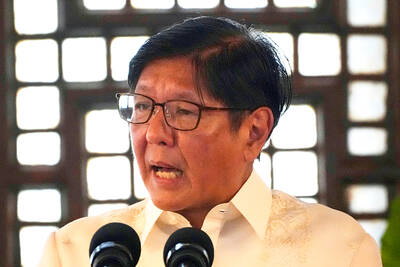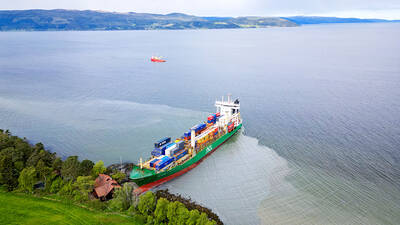New Zealand has set out to burnish its clean, green image by becoming the Asia-Pacific region’s first developed economy to stop using fossil fuels to generate electricity, although the pitfalls encountered by a Maori iwi (tribe) might signal trouble ahead.
The 3,000-member Ngaati Kea Ngaati Tuara iwi in Rotorua, when switching to renewables, found that local geothermal sources were not hot enough to generate electricity.
The tribe consequently set up small hydropower generators for its meeting ground and dairy farm, but the units struggle to operate during floods and to produce enough power at peak demand, project manager Eugene Berryman-Kamp said.
A battery could store energy for periods of high use, but there is “no appetite” to invest the more than NZ$10,000 (US$6,970) needed, he said.
In its push to be free of electricity generated from coal and natural gas, New Zealand would likely face similar problems as the tribe scaled to national size and potentially billions of dollars in costs.
“If we move too quickly, the risk is to the New Zealand consumer having to pay more for their energy and [that] could make New Zealand less competitive as a market,” said Marc England, chief executive of Genesis Energy, New Zealand’s biggest energy retailer and fourth-biggest generator.
Other countries that have turned fully to renewables for power — such as Norway and Denmark — are connected to regional grids that can help back up shortages. New Zealand, in the remote South Pacific, would not have that option.
New Zealand would need large batteries, extra wind and solar power, and might still need to use gas or coal to prevent blackouts. Such investments would send costs soaring and could alienate voters who elected New Zealand Prime Minister Jacinda Ardern last year, in part due to her pledge to counter climate change.
Ardern in April said that the government is also halting new offshore oil and gas exploration permits as part of efforts to convert the country to renewable energy by 2035.
HUGE INVESTMENTS
Critics have said that Ardern’s goals would require huge investments in renewable energy sources and grid expansion, and an overhaul of New Zealand’s biggest export industry, dairy, which relies heavily on coal, driving up power prices.
Sapere Research Group advised Wellington that its goals would require wholesale electricity prices to rise by up to 60 percent to about NZ$100 per megawatt-hour (MWh), making them some of the highest in the world.
That would destroy a key advantage for agriculture and industry in New Zealand, where baseload power futures are currently running about 25 percent less than in the Australian states of New South Wales and Victoria, where soaring electricity costs have forced some manufacturers to shut.
A backlash from industry and politicians has deepened partisan fault lines that Ardern’s center-left government, installed in October last year, is trying so smooth over, but the criticism has not stopped her from looking to establish a legacy by combating climate change.
Ardern’s government has set a goal for the country to be carbon neutral by 2050 — emitting no more carbon dioxide than its biosphere can absorb — an effort she has compared to an earlier generation standing against nuclear warfare and declaring New Zealand a “nuclear free” zone.
New Zealand Climate Change Minister James Shaw has set up a panel to develop a carbon neutrality plan by the middle of next year, and a public and business consultation is scheduled for June.
“We need to be looking at ... more renewable generation and potentially storage to replace our aging fossil fuel generators, as well as energy efficiency initiatives to better manage demand,” Shaw told reporters.
COAL FOR COWS
New Zealand gets more than 80 percent of its energy from renewable sources, mostly hydropower. Another 14 percent comes from natural gas and 3 percent from coal.
However, Fonterra Co-operative Group, the world’s top dairy exporter and one of New Zealand’s biggest energy users, gets about two-thirds of its energy from fossil fuels.
Fonterra is trying to ditch coal, but a change is going to “require significant investment,” chief operating officer Robert Spurway said.
“It’s very important to us that we find ways to do this in an economically sustainable way so that we remain competitive globally,” Spurway told reporters.
Part of the problem is that while most of the population and industry is on the North Island, most of the hydrostations are on the South Island. That increases the outage risk because of the possibility of damage to the cables connecting the two islands.
“The inconvenient truth in New Zealand is for decades we’ve used coal to back up hydroelectricity,” England said.
New Zealand’s biggest power plant, Huntly, owned by Genesis, was due to shut its coal units this year, but rival utility Meridian Energy agreed to pay Genesis to keep them open as backup at least until 2022.
WATER WANTED
Genesis said that batteries are not yet an economic option to fall back on when the country experiences extended droughts. New Zealand’s lakes have only up to eight weeks of water storage, while hydropower-dependent Norway has about two years’ worth.
Many analysts have said that New Zealand’s plan to go green is still viable and would benefit the country.
However, England said that switching to electric vehicles to wean transport off gasoline would be a better goal than 100 percent renewable power generation.
“[Electric vehicles] could be a better economic choice for the market as a whole,” he said.
Power independence has become a point of pride for the Ngaati Kea Ngaati Tuara iwi, Berryman-Kamp said, adding that he gets requests each month from other tribes interested in making similar changes.
“They like the idea that we’re self-sufficient ... They like the idea that we’re minimizing environmental impact,” he said.

NO EXCUSES: Marcos said his administration was acting on voters’ demands, but an academic said the move was emotionally motivated after a poor midterm showing Philippine President Ferdinand Marcos Jr yesterday sought the resignation of all his Cabinet secretaries, in a move seen as an attempt to reset the political agenda and assert his authority over the second half of his single six-year term. The order came after the president’s allies failed to win a majority of Senate seats contested in the 12 polls on Monday last week, leaving Marcos facing a divided political and legislative landscape that could thwart his attempts to have an ally succeed him in 2028. “He’s talking to the people, trying to salvage whatever political capital he has left. I think it’s

Polish presidential candidates offered different visions of Poland and its relations with Ukraine in a televised debate ahead of next week’s run-off, which remains on a knife-edge. During a head-to-head debate lasting two hours, centrist Warsaw Mayor Rafal Trzaskowski, from Polish Prime Minister Donald Tusk’s governing pro-European coalition, faced the Eurosceptic historian Karol Nawrocki, backed by the right-wing populist Law and Justice party (PiS). The two candidates, who qualified for the second round after coming in the top two places in the first vote on Sunday last week, clashed over Poland’s relations with Ukraine, EU policy and the track records of their

UNSCHEDULED VISIT: ‘It’s a very bulky new neighbor, but it will soon go away,’ said Johan Helberg of the 135m container ship that run aground near his house A man in Norway awoke early on Thursday to discover a huge container ship had run aground a stone’s throw from his fjord-side house — and he had slept through the commotion. For an as-yet unknown reason, the 135m NCL Salten sailed up onto shore just meters from Johan Helberg’s house in a fjord near Trondheim in central Norway. Helberg only discovered the unexpected visitor when a panicked neighbor who had rung his doorbell repeatedly to no avail gave up and called him on the phone. “The doorbell rang at a time of day when I don’t like to open,” Helberg told television

‘A THREAT’: Guyanese President Irfan Ali called on Venezuela to follow international court rulings over the region, whose border Guyana says was ratified back in 1899 Misael Zapara said he would vote in Venezuela’s first elections yesterday for the territory of Essequibo, despite living more than 100km away from the oil-rich Guyana-administered region. Both countries lay claim to Essequibo, which makes up two-thirds of Guyana’s territory and is home to 125,000 of its 800,000 citizens. Guyana has administered the region for decades. The centuries-old dispute has intensified since ExxonMobil discovered massive offshore oil deposits a decade ago, giving Guyana the largest crude oil reserves per capita in the world. Venezuela would elect a governor, eight National Assembly deputies and regional councilors in a newly created constituency for the 160,000